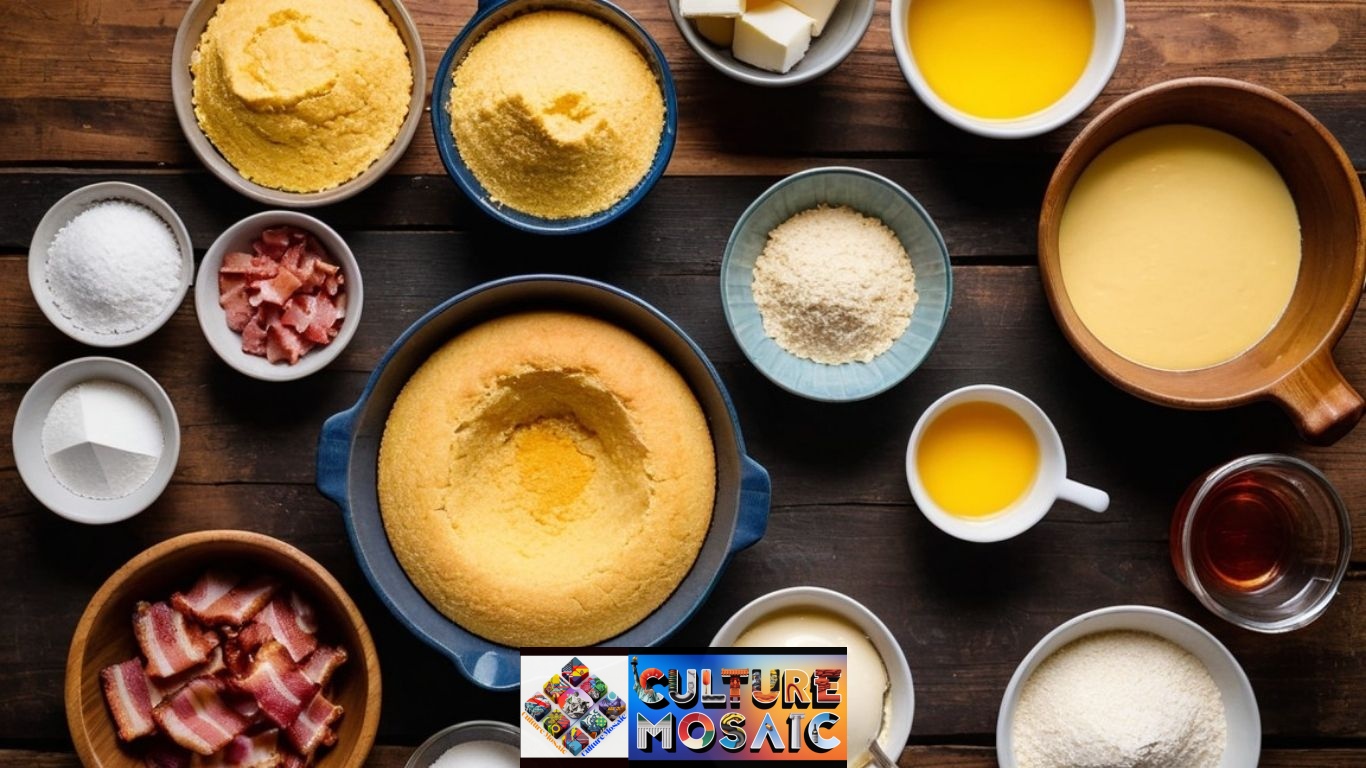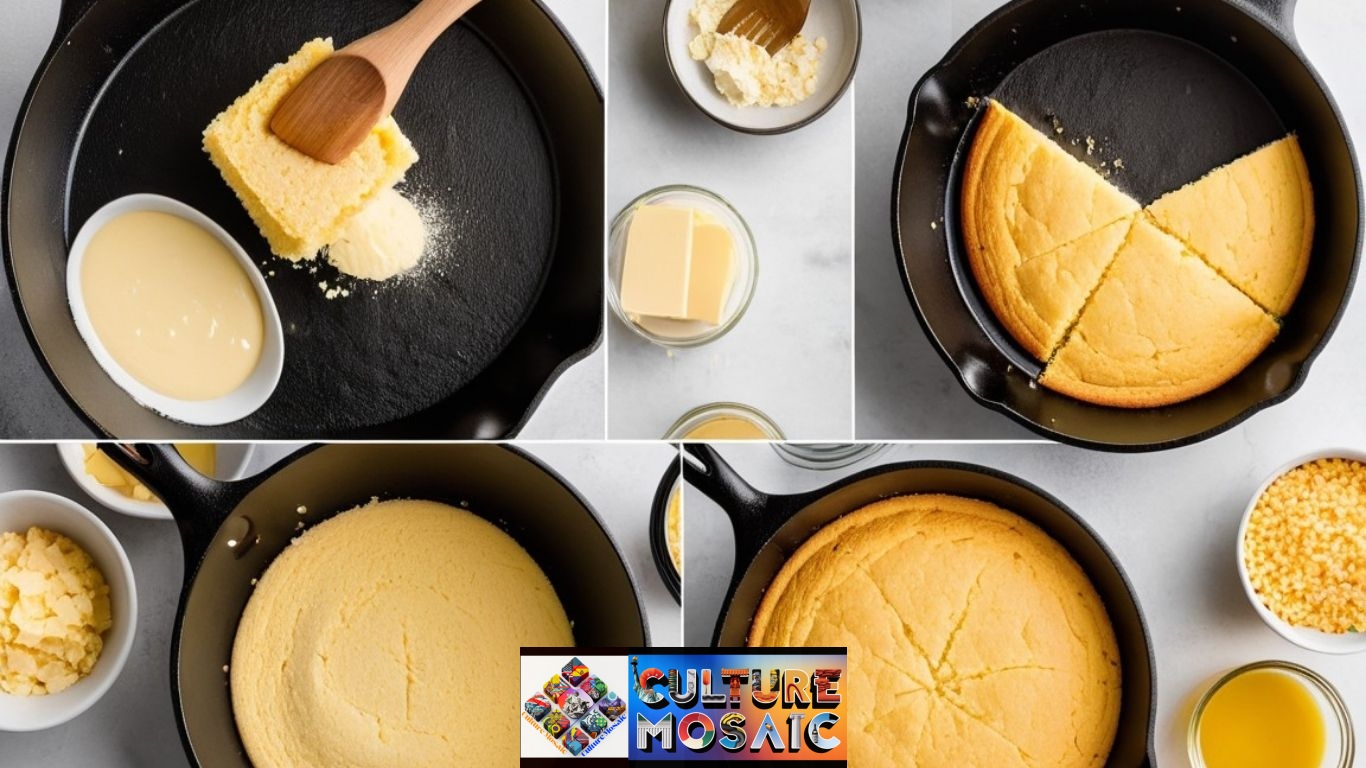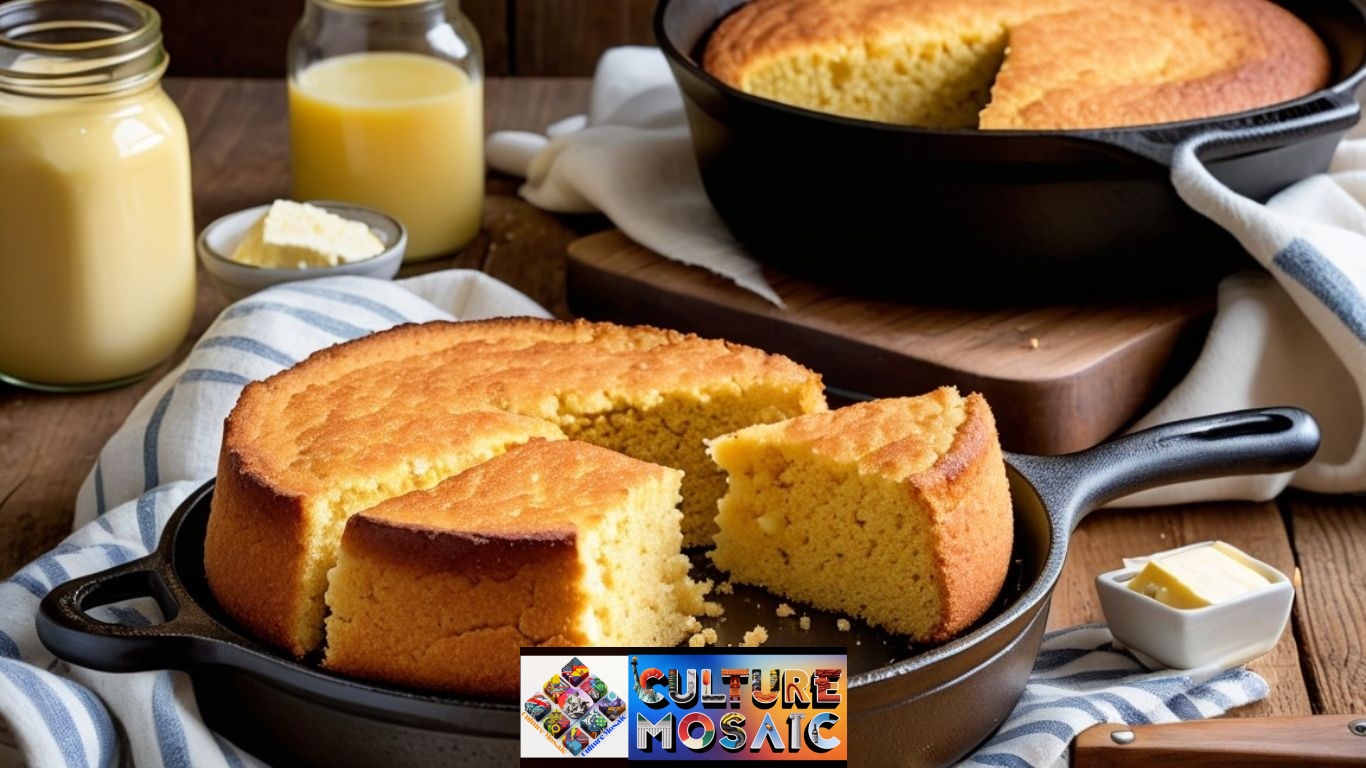A deliciously crispy and golden Southern favorite passed down through generations.
There’s something undeniably comforting about a slice of golden, crispy-edged cornbread straight from a cast-iron skillet. For generations, Southern kitchens have been built around this humble yet hearty staple. Whether paired with chili, greens, or enjoyed solo with butter, the Classic Southern cornbread recipe is more than a dish — it’s a symbol of tradition, family, and home-cooked comfort.
1. Introduction to Southern Cornbread

Cornbread is a cornerstone of Southern cuisine. It’s simple, rustic, and full of flavor — everything you want from comfort food. Unlike sweet, cake-like versions found in other parts of the U.S., a classic Southern cornbread recipe is known for its savory taste and crispy crust.
2. What Makes It “Classic”?
When Southerners say “classic,” they mean cornbread that’s:
-
Made with stone-ground cornmeal
-
Cooked in a cast-iron skillet
-
Free of added sugar (most of the time)
-
Golden on the outside, tender on the inside
3. Key Ingredients in a Classic Southern Cornbread Recipe

Here’s what you’ll need:
-
1 ½ cups stone-ground yellow cornmeal
-
½ cup all-purpose flour
-
1 tsp baking soda
-
1 tsp salt
-
1 ¾ cups buttermilk
-
1 large egg
-
¼ cup melted bacon grease or butter
These basic ingredients work together to create the rich flavor and perfect texture that define Southern cornbread.
4. Cornmeal vs. Corn Flour: Know the Difference
Don’t confuse cornmeal with corn flour. Cornmeal is coarser and adds the signature gritty texture. Using corn flour will result in a mushy, cake-like cornbread — not the Southern way.
5. Why Use a Cast-Iron Skillet?
Southern cooks reliably stand by cast iron—that’s for a good reason. It:
-
Distributes heat evenly
-
Creates a golden-brown crust
-
Adds a smoky, rustic flavor
Preheat your skillet before pouring the batter — it’s the secret to that irresistible crunch.
6. The Importance of Buttermilk
Buttermilk adds tanginess and tenderness. It reacts with baking soda to give your cornbread a light, fluffy interior. No buttermilk? Mix a tablespoon of lemon juice or vinegar with regular milk and let it sit for 5 minutes.
7. To Sugar or Not to Sugar? A Southern Debate
This topic is a hot debate in Southern kitchens. Traditionally, classic Southern cornbread recipes leave out sugar. However, some families add a teaspoon or two for balance. If you’re going for authenticity, skip the sugar.
8. Step-by-Step Classic Southern Cornbread Recipe
Ingredients:
-
1 ½ cups yellow cornmeal
-
½ cup all-purpose flour
-
1 tsp baking soda
-
1 tsp salt
-
1 ¾ cups buttermilk
-
1 egg
-
¼ cup bacon grease or unsalted butter
Instructions:
-
Preheat oven to 425°F (220°C). Place your cast-iron skillet in the oven.
-
In a bowl, mix cornmeal, flour, baking soda, and salt.
-
Combine the buttermilk and egg in a separate mixing bowl, whisking until smooth.
-
Combine wet and dry ingredients. Stir in melted bacon grease.
-
Carefully remove the hot skillet. Grease it if needed.
-
Pour the batter into the skillet. It should sizzle on contact.
-
Bake for 20–25 minutes until golden and firm.
-
Allow it to cool for 10 minutes before slicing. Then, enjoy!
9. Pro Tips for the Best Texture and Flavor
-
Preheat the skillet: This ensures a crispy bottom.
-
Don’t overmix: Just combine until ingredients are incorporated.
-
Opt for fresh cornmeal, as older varieties tend to develop a stale, musty flavor.
-
Let the batter rest for 5 minutes before baking to allow hydration.
10. Common Mistakes to Avoid
-
Using too much flour: This makes cornbread dry and dense.
-
Skipping the hot skillet: You’ll miss out on the signature crust.
-
Overbaking: Check at 20 minutes to avoid dryness.
11. Variations of Southern Cornbread
Southern cornbread is versatile. Try adding:
-
Chopped jalapeños for a spicy kick
-
Cheddar cheese for richness
-
Fresh corn kernels for sweetness and texture
-
Green onions for a savory twist
Simply preserve the original recipe as is to uphold that authentic Southern flavor.
12. Gluten-Free and Dairy-Free Options
Gluten-Free Swap:
-
Replace flour with gluten-free all-purpose flour or omit entirely (adjust liquid slightly).
Dairy-Free Swap:
-
Use unsweetened almond milk + vinegar for buttermilk.
-
Replace bacon grease with vegan butter or a neutral oil for a plant-based alternative.
13. What to Serve with Southern Cornbread
Cornbread pairs beautifully with:
-
Collard greens
-
Southern fried chicken
-
Beef chili
-
Black-eyed peas
-
Pulled pork BBQ
Alternatively, savor it on its own topped with butter, honey, or a light drizzle of molasses.
14. The History Behind Southern Cornbread
Cornbread dates back to Native American cuisine and was adopted by early settlers. Corn grew plentifully and was readily cultivated in the South. Over time, recipes evolved, but the love for cornbread stayed strong, passing through generations and Sunday dinners.
15. How to Store and Reheat Cornbread Properly
-
To store: Wrap tightly and keep in an airtight container for up to 3 days at room temperature.
-
For freezing, wrap it in plastic wrap and foil, then store in the freezer for up to three months.
-
To reheat: Use the oven at 350°F for 10 minutes or a quick warm-up in a skillet.
16. Conclusion: A Slice of Southern Heritage
The classic Southern cornbread recipe isn’t just about food — it’s about heritage, family, and love passed from one kitchen to the next. Its simplicity and depth of flavor continue to win hearts across generations. So next time you bake a batch, know you’re taking part in a beloved American tradition.
FAQs About Classic Southern Cornbread Recipe
Q1: Can I use white cornmeal instead of yellow?
A: Yes, but yellow cornmeal is preferred in the South for its richer color and flavor.
Q2: Is it necessary to use buttermilk?
A: While you can substitute it, buttermilk gives the best tangy flavor and soft texture.
Q3: What if I don’t have a cast-iron skillet?
A: You can use a metal baking dish, but the crust may not be as crisp.
Q4: How do I make it spicy?
A: Add diced jalapeños or a pinch of cayenne pepper to the batter.
Q5: Can I make this recipe vegan?
A: Yes, use plant-based milk with vinegar and a flax egg, and substitute oil for butter.

